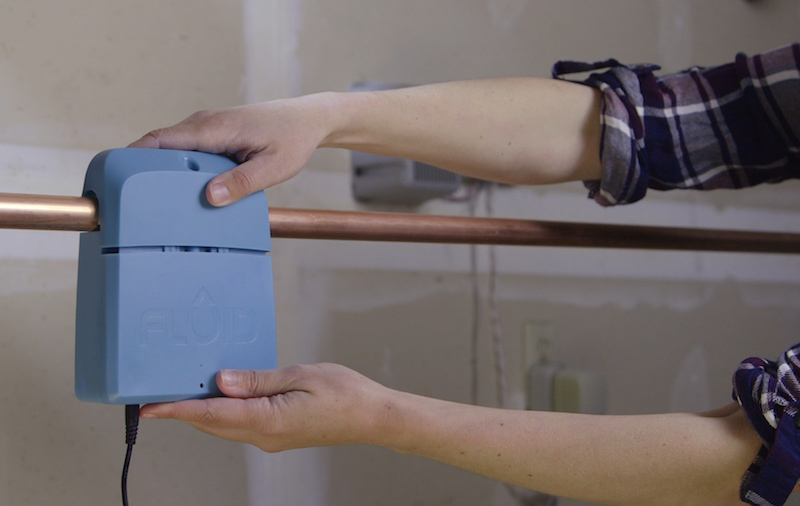Water Leak Detection: How to Determine and Fix Leaks Before They Create Damage
Ingenious Solutions for Early Detection of Water Leakages in Buildings and Framework
As the stability of structures and infrastructure is critical, the challenge of early discovery of water leaks has actually stimulated innovative remedies that promise to revolutionize the method we guard against prospective problems. From advanced leakage detection technologies to the deployment of IoT sensing units for real-time monitoring, the landscape of leakage avoidance is evolving quickly. Machine understanding algorithms provide a look right into the future of leak prediction, while thermal imaging provides a non-intrusive technique for determining hidden leaks. Automated water flow evaluation systems are improving just how leakages are identified and attended to, paving the means for a proactive method to water leak detection. Each of these options holds the crucial to ensuring the dependability and durability of our developed atmosphere, motivating a change in the direction of a more sustainable and effective future.
Advanced Leak Discovery Technologies
Advanced leakage discovery modern technologies, furnished with innovative sensing units and algorithms, play a critical duty in swiftly identifying and pinpointing water leakages in numerous settings. These technologies employ a mix of acoustic, thermal, and electromagnetic sensing techniques to spot leakages accurately. Acoustic sensors identify the noise of getting away water, enabling accurate localization of the leak resource. Thermal imaging finds temperature changes created by water leak, offering one more reliable technique for leak recognition. Electromagnetic sensing units can recognize changes in magnetic fields triggered by water, offering yet an additional layer of leak discovery capacity.

IoT Sensors for Real-Time Monitoring
In the world of modern water leakage discovery, the integration of IoT sensors for real-time tracking stands for a crucial advancement in enhancing aggressive leak detection abilities. These sensing units supply continuous monitoring of water systems, offering real-time data on water flow rates, pressure variations, and temperature changes. By leveraging IoT innovation, these sensors can find also the tiniest abnormalities in water use patterns, allowing very early identification of prospective leaks before they escalate right into major problems.
IoT sensing units send information to a central platform, where sophisticated formulas evaluate the info and generate alerts or notifications when abnormalities are spotted. This real-time monitoring ability enables homeowner or facility managers to promptly resolve leakages, reducing water damage, reducing fixing expenses, and conserving water sources.
Moreover, IoT sensors can be integrated with structure management systems, allowing for computerized actions to discovered leaks, such as turning off water valves or turning on pumps to alleviate the effect of leakages. Generally, the implementation of IoT sensing units for real-time tracking significantly boosts the efficiency and performance of water leak discovery in structures and infrastructure.
Artificial Intelligence Algorithms for Leakage Prediction

One secret advantage of making use of machine discovering for leakage forecast is its ability to continuously discover and improve its accuracy over time. As more information is accumulated and fed into the formula, it can refine its forecasts and adapt to altering conditions, inevitably enhancing the reliability of leak discovery systems.
Additionally, machine understanding algorithms can help in recognizing subtle indicators of leaks that might go undetected by standard surveillance techniques. water leak detection. By evaluating see this page complex data embed in real-time, these algorithms can supply early warnings and signals, allowing for timely treatment and preventive upkeep to mitigate prospective water damages and linked costs
Using Thermal Imaging for Leakage Discovery
Thermal imaging innovation uses an encouraging technique for detecting water leakages in numerous systems and frameworks. By making use of infrared radiation and temperature level differences, thermal imaging cams can recognize concealed leakages that are not quickly visible to the naked eye.
One of the key benefits of thermal imaging for leakage discovery is its non-intrusive nature. Unlike standard methods that might call for damaging into walls or floorings to situate leakages, thermal imaging enables non-destructive screening. This not only conserves time and reduces costs yet additionally reduces interruption to the building or framework being analyzed. In addition, thermal imaging can swiftly scan huge locations, offering a comprehensive overview of possible leakage sources in a prompt way. In general, the usage of thermal imaging modern technology improves the performance and accuracy of water leakage detection, making it a valuable device for preserving the integrity of structures and facilities.
Automated Water Flow Evaluation Systems
Just how can automated water circulation analysis systems reinvent the detection and administration of leakages in different systems and infrastructures? Automated water flow evaluation systems supply a proactive approach to leakage detection by continually monitoring water circulation prices and patterns. By developing baseline information, these systems can promptly recognize variances that might suggest a leakage, making it possible for timely intervention to avoid substantial damages.
These systems utilize advanced algorithms to evaluate real-time information and provide prompt notifies when abnormalities are identified, enabling swift activity to be discover this info here taken. In addition, computerized water circulation analysis systems can be integrated with structure management systems or IoT platforms, boosting total effectiveness and making it possible for remote tracking capabilities.
In addition, the data gathered by these systems can be made use of for predictive maintenance purposes, assisting to identify potential weak factors in the framework prior to leakages happen. Generally, the application of automatic water flow evaluation systems can dramatically improve leakage discovery and monitoring techniques, inevitably bring about cost savings, reduced water wastage, and raised sustainability in structures and facilities.

Conclusion
Finally, the assimilation of sophisticated leakage discovery modern technologies, IoT sensing units, artificial intelligence formulas, thermal imaging, and automated water flow evaluation systems supplies cutting-edge remedies for discover here very early discovery of water leakages in structures and framework. These innovations enable real-time monitoring, forecast of leakages, and efficient discovery approaches to avoid water damages and wastefulness. Executing these services can assist in maintaining the integrity and sustainability of water supply in numerous setups.